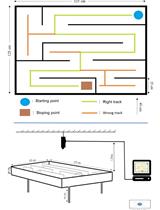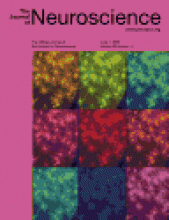- Submit a Protocol
- Receive Our Alerts
- Log in
- /
- Sign up
- My Bio Page
- Edit My Profile
- Change Password
- Log Out
- EN
- EN - English
- CN - 中文
- Protocols
- Articles and Issues
- For Authors
- About
- Become a Reviewer
- EN - English
- CN - 中文
- Home
- Protocols
- Articles and Issues
- For Authors
- About
- Become a Reviewer
Socially Transmitted Food Preference (STFP) Task Protocol
Published: Vol 2, Iss 11, Jun 5, 2012 DOI: 10.21769/BioProtoc.224 Views: 10435

Protocol Collections
Comprehensive collections of detailed, peer-reviewed protocols focusing on specific topics
Related protocols

Evaluating Working Memory on a T-maze in Male Rats
Ahmed M. Hussein [...] Volker Korz
Jul 20, 2018 10242 Views

Classic Labyrinth Test for Neurobehavioral Evaluation in Wistar Rats
Salim Gasmi
Sep 20, 2018 6861 Views

Consummatory Successive Negative Contrast in Rats
Ana María Jiménez-García [...] Ignacio Morón
Apr 5, 2019 5043 Views
Abstract
Temporally-graded retrograde amnesia (TGRA) refers to a phenomenon of premorbid memory loss whereby information acquired recently is more impaired than information acquired more remotely. Studies of human amnesia have illuminated this phenomenon (Hodges, 1994; Squire and Alvarez, 1995), but such studies necessarily rely on retrospective methods and imperfect tests. Studies in experimental animals have the advantage that retrograde amnesia can be studied prospectively, the locus and extent of brain lesions can be determined accurately, and the timing and strength of original learning can be precisely controlled. The socially transmitted food preference (STFP) task has been one of the most productive rodent behavioral tasks to study TGRA (Clark et al., 2002).
Materials and Reagents
- Rats
- Cinnamon
- Cocoa
- Ethanol
- Powder
- Flavored rat chow meal (see Recipes)
Equipment
- Glass jars and the jar holders
- Fisher Scientific scale
- Feeding apparatus
- Cages
Procedure
The Task:
The STFP task is separated into four distinct phases. Phase I consists of food deprivation and habituation of the demonstrator rats to the powder rat chow (“tuning of the demonstrator rats”). Phase II consists of the feeding of the demonstrator with a specified flavored meal, and the interaction of a demonstrator rat with an observer rat. Phase III is a specified delay interval following the interaction between the rats. Finally, phase IV is a testing period in which the observer rat is given a choice between a familiar (the flavored meal that the demonstrator rat was fed) and a novel (a flavor that neither rat has been exposed to) meal chow sample to test the memory of the interaction.
- Phase I: Food deprivation and habituation to meal chow
In order to ensure that the demonstrator rats eat the desired flavored rat chow at the specified time, the rats must be habituation to the meal chow (finely ground rat chow pellets that the rats are normally fed). To do this the rats must become accustomed to a routine of 23 h of food deprivation, followed by one hour of feeding. This trains the rats to eat its fill within the hour ensuring the consistent transmission of the flavor from the demonstrator to the observer. The following steps are taken for this training.- Day 1
- Cull the rats into individual cages so that all of the demonstrators and all of the observers are in their own cages.
- Remove the pellet rat chow from the demonstrators rats’ cages for 23 h, and place a “do not feed” sign on the cages.
- Cull the rats into individual cages so that all of the demonstrators and all of the observers are in their own cages.
- Day 2
- After the 23-h food deprivation, feed the demonstrator rats non-flavored meal chow for 1 h using the glass jars and the jar holders. Using a sharpie, label the glass jars with the rat number and the side (left or right) so the jars can be easily distinguished from each other.
- Using the Fisher Scientific scale, weigh the mass of one empty jar (massE) for each rat. Fill the jars approximately ¾ of the way full (45-50 g), and weigh the initial mass of each sample and jar (mass).
- Administer the samples to the rats using the jar holders in the rats' home cages.
Place the sample holders and the samples in the demonstrator’s cage (opposite from the food and water bottle allowing for the maximum amount of room for the rat to eat) and bury the base of the holder in the bedding to stabilize the apparatus. - After one hour has elapsed, remove the feeding apparatus and resume the 23-h food deprivation.
- Weigh the final mass of the sample and jar (massF) for each rat, and record the data.
- After the 23-h food deprivation, feed the demonstrator rats non-flavored meal chow for 1 h using the glass jars and the jar holders. Using a sharpie, label the glass jars with the rat number and the side (left or right) so the jars can be easily distinguished from each other.
- Day 3- same as day 2.
NOTE: If a demonstrator rat fails to eat 5 g of powder chow during the one hour feeding session, he should not be used the following day in the interaction phase of the task. Additional days of training may be accrued until the rats reach the suggested criteria.- After two days of 23 h food deprivation and one hour feeding, the rats should be accustomed to the eating schedule and the interaction with the observer rat will take place the following day.
- Using the large weigh boats, the two flavored meal chows should be prepared at this time. They are approximately 1% cinnamon (3 g of cinnamon to 300 g of meal chow) and 2% cocoa (6 g cocoa to 300 g of meal chow). Precautions should be taken so that cross contamination doesn’t occur during the preparation of the samples (i.e. change gloves after weighing out cinnamon or cocoa). Combine the meal and the given flavor in the same zip-lock bag and mix until evenly dispersed. It is recommended that the flavored meal should be prepared at least a day in advance and shouldn’t be stored for longer than a couple of days.
- After two days of 23 h food deprivation and one hour feeding, the rats should be accustomed to the eating schedule and the interaction with the observer rat will take place the following day.
- Day 1
- Phase II: Interaction between the observer rats and the demonstrator rats.
After the demonstrator rats have been trained to eat the meal chow, they will now be exposed to a flavored meal chow. This will be followed by an interaction with an observer rat allowing for the transmission of the scent of the specific flavor to the observer. The interaction is accomplished through a wire screen that is constructed in a cylindrical shape allowing the demonstrator rat to be placed into the empty space of the cylinder. This allows the rats to interact, the experimenter to differentiate between the two rats, and also prevents the rats from fighting.- Day 4
- Weigh out the samples of the flavored powder chow, one jar each rat, (prepared the previous day) to be administered to the demonstrator rats. Record the empty mass of the jar (massE) and the initial mass of the sample (masso) on the data sheet.
Note: It is important to always feed the same demonstrators the same flavor of meal. It is unclear if previous feedings of the demonstrator can influence or confuse the observer rats, therefore, feeding the demonstrators two different types of flavored meal chow for two different testing periods should always be avoided. - After the 23-h food deprivation, feed the demonstrator rats flavored meal chow (cinnamon or cocoa) for 1 h.
- While the demonstrator rats are eating, remove the corresponding observer rats’ food.
- After the demonstrator rats have eaten the flavored powder chow for 1 h, place the cylindrical screen partition in the observer’s home cage and transfer the demonstrator rat into the center space of the screen partition. This separates the demonstrator and the observer rats. Replace the wire cage top to secure the partition and remove the water bottle. Allow the demonstrator and the observer rats to interact for the given exposure time. Typically 30 min, but this can be used as an independent variable.
This is the only time that either rat is not allowed to have water present in their cages. It is unclear if drinking water can dilute the scent. It is also desirable to have the rats interacting as much as possible during this time so any distractions (e.g. a water bottle) should be avoided. - While the demonstrator and the observer rats are interacting, determine the final mass of the demonstrator’s flavored powder chow samples and record the data.
- After the interaction time is complete, return the demonstrator rat to his home cage. It is easiest to remove both the rat and the screen partition concurrently since the demonstrator will often grab onto the screen once he is lifted out of the cage.
- If no further testing of the demonstrator rats will be done the following day, return the rat chow pellets and remove the do not feed sign from the demonstrator’s cage. If the demonstrators are going to be used in an interaction the following day, do not return their food. Instead, continue with the 23 h. food deprivation schedule and return the caged demonstrator to the appropriate shelf.
- If a longer delay is used, replace the rat chow pellets and the water to the observer rat’s cage and return the caged observer to the shelf. Do not return the food if the observer rats are going to be tested immediately. Instead, go directly to phase IV.
- Weigh out the samples of the flavored powder chow, one jar each rat, (prepared the previous day) to be administered to the demonstrator rats. Record the empty mass of the jar (massE) and the initial mass of the sample (masso) on the data sheet.
- Phase III: Delay interval.
At this time, a given delay is allowed to elapse before the observer rats are given a choice between the food that their demonstrator rat was exposed to, the familiar food, and a novel flavored sample that neither rat has ever been expose to before. The length of this delay is variable and determined by the experimenter. This delay is crucial for post-operative animal recovery or to test the retention of the memory over longer delays. - Phase IV: Testing phase of the observer rats.
After the delay has elapsed, the observer rats are tested on the retention of the memory created during the interaction with the demonstrators. The test consists of exposing the observer rats to two samples, the familiar and the novel food samples, and determining by mass how much the observer rat eats of both samples. Measurements are made at one, two, and twenty four hour intervals and the percent preference for the familiar and novel food is calculated.- Day 1
- After the given delay has elapsed, the observer rat’s food is removed and a “do not feed” sign is placed on the cage, one hour prior to administering the two samples.
- After removing the rat chow pellets, label two of the jars, weigh them empty (massE), and add the flavored rat chow meal (1% cin and 2% cocoa) to approximately ¾ full (45-50 g) and determine the initial mass (masso).
- The two samples, novel and familiar, are taped (any kind will do) to the plastic sample holder and placed into a new fresh cage containing a minimal (just enough to cover the bottom of the cage) amount of bedding. The minimum bedding decreases the chances of the rat burying or contaminating the samples. If a group of animals is being tested, alternate the familiar food on the left and the right sides so that an equal distribution between the two sides is obtained to compensate for any natural side preferences that the rats may have.
- Place the samples, one cinnamon and the other cocoa, into the new cage and move the observer rat, along with his water and wire cage top.
- Secure the cage and return it to the shelf, and allow the rat to eat from the two samples for one hour.
- After one hour has expired, both food samples are removed and weighed (massF1).
Wipe away any bedding from the exterior of the jar and only attempt to remove contamination from the inside (by sifting) if there is an excess present. - The samples are then returned to the test cage and the rat is allowed to eat for another hour.
- After the second hour, the samples are again removed, weighed, and the masses are recorded (massF2). The samples are placed back into the observers’ testing cage for another 22 h.
- After 24 h has elapsed, the samples and the do not feed sign are removed and the rat chow pellets are given back to the observer rat.
- The final samples are sifted (if necessary) through a screen to remove any bedding or other contaminating material and the final mass is measured (massF24).
- Use the small green handled sifting tool to sift away any contaminating material. It is easiest to sift the entire sample through the screen into a weigh boat and then transfer the entire sample back into the original glass container to make the final mass measurement.
- Often it is not necessary to sift the samples and any minor contamination can be removed using forceps. However, if there is contamination after the 24-hour exposure and if one sample of a pair is sifted, be sure to sift the other sample of the same pair. This ensures that if any of the samples mass is lost in the sifting process, it is proportionally lost in both samples so that the relative masses are roughly unchanged.
- Use the small green handled sifting tool to sift away any contaminating material. It is easiest to sift the entire sample through the screen into a weigh boat and then transfer the entire sample back into the original glass container to make the final mass measurement.
- After the given delay has elapsed, the observer rat’s food is removed and a “do not feed” sign is placed on the cage, one hour prior to administering the two samples.
- Day 1
- Miscellaneous information
- Cleaning of glassware
- Organization of data
All primary data should be kept in the black STFP binder. In addition to this, all data should be entered into the computer so that two copies of all the data are kept. The data sheets can be found in the Excel file under the C drive, Clark folder, Rat folder, and STFP folder. The data sheets used in the notebook are the “Data sheets for the STFP Task” and the data sheets used for the computer are the “Cal. data sheets for the STFP Task.” The calculation data sheets do the minor calculations needed to determine the mass consumed by the rats and can be used to save the experimenter time or as a check of any primary calculations. After all primary data has been recorded and stored; the data should be transferred to the “all data” sheet found in the same folder. This data file calculates both of the percent preferences and allows for quick and easy interpretation. - Sample calculation
Data is often interpreted as a percent preference for the familiar or novel food. This calculation is simply the mass of familiar/novel food consumed divided by the total mass of food eaten multiplied by 100%. Commonly, the percent preference for the familiar food is determined. For example,
% preference = mass of familiar food (g) (100%)
Total mass of food eaten (g)
- Cleaning of glassware
Recipes
- Flavored rat chow meal
1% cinnamon
2% cocoa
Acknowledgments
This protocol is adapted from Clark et al. (2002).
References
- Clark, R. E., Broadbent, N. J., Zola, S. M. and Squire, L. R. (2002). Anterograde amnesia and temporally graded retrograde amnesia for a nonspatial memory task after lesions of hippocampus and subiculum. J Neurosci 22(11): 4663-4669.
- Day 4
Article Information
Copyright
© 2012 The Authors; exclusive licensee Bio-protocol LLC.
How to cite
Readers should cite both the Bio-protocol article and the original research article where this protocol was used:
- Clark, R. E. (2012). Socially Transmitted Food Preference (STFP) Task Protocol. Bio-protocol 2(11): e224. DOI: 10.21769/BioProtoc.224.
- Clark, R. E., Broadbent, N. J., Zola, S. M. and Squire, L. R. (2002).Anterograde amnesia and temporally graded retrograde amnesia for a nonspatial memory task after lesions of hippocampus and subiculum. J Neurosci 22(11): 4663-4669.
Category
Neuroscience > Behavioral neuroscience > Learning and memory
Neuroscience > Behavioral neuroscience > Animal model > Rat
Do you have any questions about this protocol?
Post your question to gather feedback from the community. We will also invite the authors of this article to respond.
Share
Bluesky
X
Copy link








